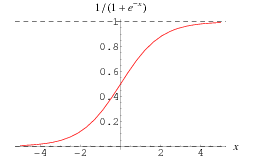[ QUOTE ]
Fold equity occurs when you expect to profit from the other players folding to your bet/raise. I suppose it could be mathematically expressed as
[Pot Size] * [Probability of Villain(s) Folding].
[/ QUOTE ]
When you combine it with the pot, then it becomes the EV gained from the chance that your opponent(s) will fold. I've been thinking an unhealthy amount about FE in the past couple of weeks, so maybe I can offer some insight.
Consider it's relation to the term "pot equity", which represents the frequency with which you will win a showdown. PE is a constant value regardless of the outcome of the hand, but it ultimately only comes into being when a showdown actually occurs. That is, it is
independent of the size of your bets or the size of the pot. Fold equity on the other hand, represents the frequency with which you will win with no showdown. Since this varies according to the size of the pot and the size of your bet, we would say it's
dependent on these variables.
Visually, if you were to make a graph of PE vs bet size, it would be a straight, horizontal line. If you were to graph FE vs bet size, it might look something like a sigmoid (ignore the labels on the axes, I just scraped it off a math website):

A small bet has less FE than a large bet. When people say things like "maximize FE", they are referring to the fact that you want to launch the bet that gives your opponent the greatest chance to fold. It took me a while to grasp the concept that PE and FE have no relation on each other, but each of them does affect EV. Your EV for a bet would be something like:
EV(total) = EV(opponent calls) + EV(opponent folds)
Let f = fold equity, p = pot size, e = pot equity, and b = bet size. I think the full EV equation would look something like this:
EV(total) = (reward of call) * (chance of a call) + (reward of fold) * (chance of fold)
= (reward of call) * (1-f) + (reward of fold) * (f)
Since the reward of him folding is the pot, we get
= (reward of call) * (1-f) + p*f
The reward of a call falls back on the more common EV calculation related to PE (ignoring implied odds):
reward of call = e*(p+b) - (1-e)*b
So, the whole thing is:
EV(total) = (e(p+b) - (1-e)b)(1-f) + pf
Does this make sense?